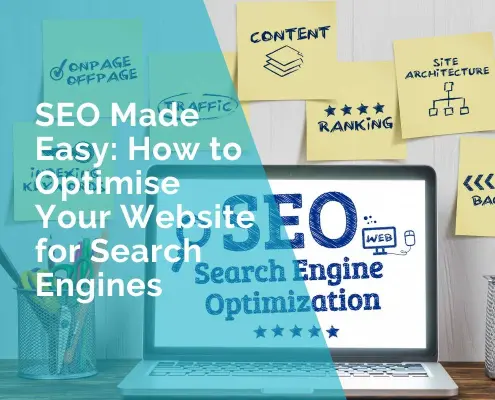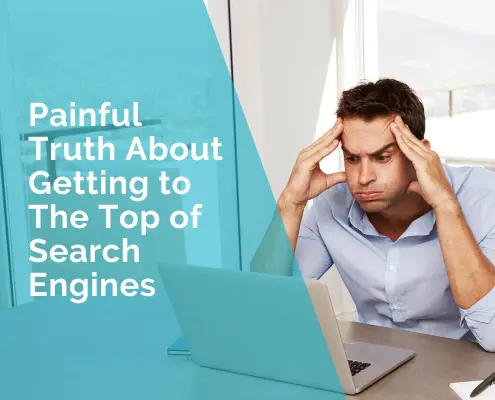The Top 10 Do’s and Don’ts of SEO
It’s 2024, and a business is dead or alive by a search engine’s visibility. A good online presence drives traffic, leads, and credibility. That is where Search Engine Optimization comes in – the powerful strategy to rank businesses higher in search engines and reach audiences.
In fact, Hubspot research suggests that 61% of businesses say that SEO is an essential part of their inbound marketing strategy. Businesses use SEO to amplify their online presence, generate more traffic to their website, and, in turn, increase conversions and revenue.
Still, most firms cannot get it right despite their best efforts. Often, common myths and misinformation may undermine SEO performance, leading to waste and missed opportunities.
For instance, some businesses believe SEO is all about keyword-stuffing and search-engine manipulation when the opposite is true. Creating meaningful, high-quality content that resonates with users is far more important.
What are the secrets to unlocking SEO success? In this blog post, we will dive into the top 10 do’s and don’ts of SEO that will be actionable tips and strategies to optimize your website to drive more traffic, leads, and sales.
The Importance of Understanding SEO Do’s and Don’ts
SEO has completely changed over time. What worked five years ago—that is, keyword stuffing and exact-match backlinks—isn’t as strong. Google algorithms are far more focused on semantic SEO, user intent, and context rather than on the technical and mechanical aspects that E-E-A-T, for instance, ensures: good content about a topic that people believe in is ranked higher.
To keep up in this highly competitive landscape, understanding what’s a good and bad SEO practice is a necessity. Doing what is no longer allowed by search engines may get you penalized or reduce your visibility, but following the best practices may make your site climb higher in search rankings and attract more organic traffic.
One of the oldest techniques that many businesses are still using is reciprocal link building. It may seem simple and a good way to improve SEO, but the reality is that exchanging links will damage the credibility of your site and its rankings in search engines. Read on to learn why it is no longer recommended and what works better today in SEO.
Mastering these principles is one way to attain online success in today’s changing SEO world. Let’s explore the top 10 do’s and don’ts in SEO next.
Top 5 Do’s of SEO
As SEO experts, we have witnessed many firms failing to get their web presence right. However, following the top five do’s of SEO will help drive more traffic, increase conversion, and eventually, your business shall grow.
Do #1: Use Long-Tail Keywords
These keywords have a lesser search volume but will be more relevant to your business, product, or service. Therefore, longer tail keywords increase your ranking opportunities on search engines as well as more targeted traffic on your website.
Use Ahrefs or SEMrush to get some long-tail phrases that are related to the niche, then put them in the content organically. Assume that you have a fitness studio in New York. You can target some long-tail keywords by having “yoga classes in Manhattan” or “personal trainers in Brooklyn.”
Professional Tip: Use Google Keyword Planner to find the most appropriate long-tail keywords that are less competitive and have a relatively high volume.
Do #2: Optimize user experience
UX is one of the most integral parts of search engine optimization. If your website offers a good user experience on your website, there will be more time spent, participation, and eventually conversion.
Optimize user experience on your website by following these:
- Mobile-friendly and fast-loading
- Easy navigation with clear calls to action
- Use bulleted and numbered lists, headings, and subheadings
- Offer useful and relevant content that matches your target audience
Professional Tip: Use heat mapping tools such as Crazy Egg to figure out exactly how users are engaging with any given area of your site, then work on optimizing for better usability.
Do #3: Create Quality, Relevant Content
Content is King. This is especially true when it comes to SEO. Search engines value quality content and rank it higher. Quality content is the type of content that provides value to the reader, answers their queries, and goes a step further to educate them.
To create high-quality content, focus on the following:
Provision of value to your target audience
- Use a conversational tone that is easy to read and understand
- Include images, videos, and infographics to make the text rich
- Optimize with relevant keywords and phrases for optimum content
Professional Tip: Optimize your content’s SEO using tools such as Yoast SEO to get your content discovered by your target audience.
Do #4: Leverage Title Tags and Meta Descriptions
Title tags and meta descriptions are at the core of any SEO work. Users see these on the result page of a search SERP, great meta descriptions can improve your click-through rates.
Some best practices include the following:
- Write catchy headlines to entice the user to click
- Make sure that keyword phrases are included
- Keep your title tags and meta descriptions concise and adequately descriptive.
- Use Moz or Ahrefs to optimize your title tags and meta descriptions.
Professional Tip: Use title tag and meta description templates to help keep your website consistent and to save time and resources.
Do #5: Track Site Metrics and Analyze Performance
Tracking site metrics is essential to know how your website is doing and to make data-driven decisions.
To track site metrics, use tools like Google Analytics to monitor:
- Website traffic and engagement metrics, such as page views and bounce rates
- Conversion metrics such as form submissions and sales
- User behavior metrics such as click-through rates and time on page
- Technical metrics such as website speed and mobile usability
Professional Tip: Set up custom dashboards in Google Analytics to track key metrics and KPIs and to make data-driven decisions that drive business growth.
The Top 5 Don’ts of SEO
Don’t #1: Ignore User Search Intent
User search intent is the reason behind a user’s search query. Ignoring user search intent means you end up creating content that your target audience will not really resonate with. This will lead to low engagement rates along with high bounce rates.
Identify relevant keywords and phrases with the help of tools like Google Keyword Planner or Ahrefs and then create content that solves the problem or answers the question.
Professional Tip: Looking at Google Autocomplete, find user intent and create answerable content for those common questions.
Don’t #2 Keyword-Stuff
Keyword stuffing is definitely a black hat SEO technique frowned upon by search engines. Not only does that harm the user experience, but it can also lead to the penalty of search engines.
Integrate keywords into content by creating high-quality content that is relevant to the target audience. Make sure that you offer value to your visitors rather than using keywords that jeopardize the readability and smooth flow of your content.
Professional Tip: Use the keyword density formula to be natural in the integration of the keywords and not overly optimal.
Don’t #3: Tolerate Slow Page Speed
Part of SEO that one needs to pay attention to is page speed. A page that loads too slowly increases bounce rate resulting in low engagement.
Enhance the page speed by the use of Google PageSpeed Insights, which identifies points that can be improved on. After that, it is possible to optimize the image, minify CSS, use JavaScript files, and use a browser cache to improve page speeds.
Professional Tip: Ensure the use of a content delivery network to reduce latency and increase page speeds.
Don’t #4. Ignore Mobile-Friendliness
Mobile-friendliness is one of the critical criteria in SEO because a larger portion of users now go online using mobile devices.
Some tips for mobile-friendliness: Use responsive web design so that website content will be suitable across various screen sizes and devices. Test with various devices and browsers; it helps to find problematic areas.
Professional Tip: Google has a Mobile-Friendly Test tool. Use that to see where you need improvements to make it mobile-friendly.
Don’t #5: Ignore Technical SEO
Technical SEO is an essential component of SEO, for it determines how search engines crawl and index your website. Technical SEO, if left out, results in bad rankings from the search engine, minimal visibility, and lost conversions.
Optimize XML sitemaps, robot.txt files, and meta tags for maximum crawlability and indexability by the search engine.
Professional Tip: Technical SEO audit tools help determine the areas for improvement and optimize technical SEO elements.
SEO is a long-term approach. Drive your way to success, conversions, and business expansion through the top 10 do’s and don’ts of SEO. Remain updated with the latest trends and best practices of SEO so you’re not left in the dust by your competition.
***
Emma Megan












